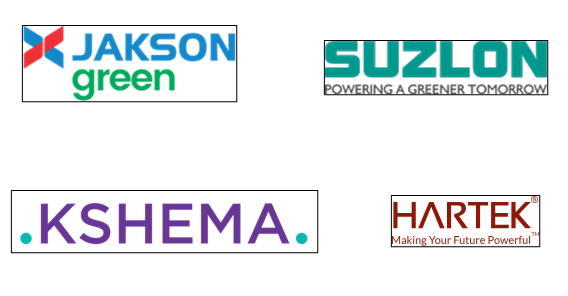By Amit Mittal
India’s paper industry is witnessing a steady growth trajectory, driven by rising demand for packaging, hygiene products, and educational materials. Currently producing around 25 million tonnes of paper annually, the sector is projected to reach 30 million tonnes by 2027. However, this expansion comes at a cost. Paper manufacturing is one of the most resource-intensive industrial activities, requiring significant amounts of water, raw material, and—most critically—energy. Traditionally powered by coal, diesel, and grid electricity, the sector is under mounting pressure to reduce its carbon footprint. As India moves toward its 2070 net-zero emission goal, transitioning the paper industry to renewable energy is no longer optional—it’s essential. Among the various renewable sources available, solar energy presents the most promising and practical solution for powering India’s paper production sustainably.
The Environmental Toll of Traditional Paper Production
Paper manufacturing consumes vast amounts of energy and water. From pulping to drying, the entire production process is resource-heavy and often powered by fossil fuels. This leads to considerable greenhouse gas emissions and contributes to environmental degradation. Switching to renewable energy is a crucial step in reducing this ecological footprint. Solar power, with its minimal operating emissions, offers a cleaner way forward for the industry.
Why Solar Energy is Important
India is naturally endowed with abundant sunlight, receiving approximately 4–7 kWh per square meter of solar radiation per day for more than 300 sunny days a year. This makes solar energy not only viable but also highly scalable across different geographies. According to recent research, India aims to reach 280 GW of solar power by 2030. With falling costs and rising efficiencies in photovoltaic (PV) systems, solar has emerged as one of the most affordable energy options.
In the context of paper production, solar energy can be used in two primary ways, i.e., for electricity generation via PV systems and for heat generation through solar thermal systems. Since paper mills require both thermal and electrical energy, the adaptability of solar energy to serve dual purposes makes it particularly relevant for the sector.
The Role of Solar Thermal Technology
While solar PV gets much of the spotlight, solar thermal technology offers equally important opportunities for paper manufacturing. Many paper-making processes, especially drying and pulping, require heat in the range of 60°C to 250°C. Solar thermal systems, such as flat-plate collectors and evacuated tube collectors, can easily provide this level of heat. A preliminary assessment by the Indian Institute of Technology suggests that solar thermal systems could meet up to 30% of the heating needs of paper mills in India’s sun-rich states like Gujarat, Maharashtra, and Tamil Nadu. By replacing coal-fired boilers with solar thermal systems for preheating water or process steam, paper mills can achieve significant emission reductions and lower fuel costs.
Government Policies Supporting Solar Adoption
The Indian government has been actively promoting solar energy adoption through various schemes and subsidies. Under the National Solar Mission, industrial users are encouraged to shift toward solar power with incentives like accelerated depreciation, capital subsidies, and net metering benefits. The MNRE’s Rooftop Solar Programme Phase II is especially helpful for small and medium enterprises (SMEs), enabling them to install systems with reduced upfront costs. Additionally, as environmental regulations tighten and consumers demand more sustainable products, solar-powered paper production can offer a competitive edge. Incorporating clean energy into the supply chain enhances brand reputation, helps meet global ESG (Environmental, Social, Governance) criteria, and opens up export opportunities to environmentally conscious markets.
Addressing the Challenges
While solar energy offers many benefits, the adoption of solar energy in paper manufacturing is not without challenges. The foremost issue is the upfront capital cost, especially for small and medium-sized mills that may lack access to financing. However, innovative business models like PPAs and leasing options allow these mills to use solar power without owning the infrastructure, paying only for the energy consumed.
Another concern is the availability of space for installing solar panels, particularly in older facilities with limited rooftop or adjacent land area. This can be addressed by using high-efficiency panels, vertical mounting systems, or even exploring floating solar options where feasible. Additionally, solar energy’s intermittent nature requires hybrid systems or energy storage solutions to ensure 24/7 power availability. These systems can be paired with battery storage or integrated with biomass boilers to maintain a consistent energy supply.
The Road Ahead
For solar energy to become the backbone of sustainable paper production in India, coordinated efforts are needed from the government, industry associations, and individual enterprises. Industry bodies like the Indian Paper Manufacturers Association (IPMA) can play a key role by facilitating group procurement, sharing technical know-how, and representing the industry’s interests in policy discussions. Paper mills must also conduct regular energy audits to assess their solar potential and develop phased implementation plans. By integrating solar solutions into their operational strategies, paper manufacturers can align themselves with national sustainability goals while also future-proofing their businesses against rising energy costs and regulatory risks.
The transformation of India’s paper industry into a sustainable and energy-efficient sector is both necessary and achievable. Solar energy offers a practical, cost-effective, and environmentally responsible solution to the industry’s energy challenges. With government support, there is a clear roadmap for widespread adoption. Embracing solar energy will not only reduce the carbon footprint of paper production but also enhance operational resilience, financial viability, and global competitiveness. As India moves towards a greener future, the paper industry must lead the way and solar power can help it get there.

(The author is Amit Mittal Founder and MD Chandpur Paper, and the views expressed in this article are his own)


